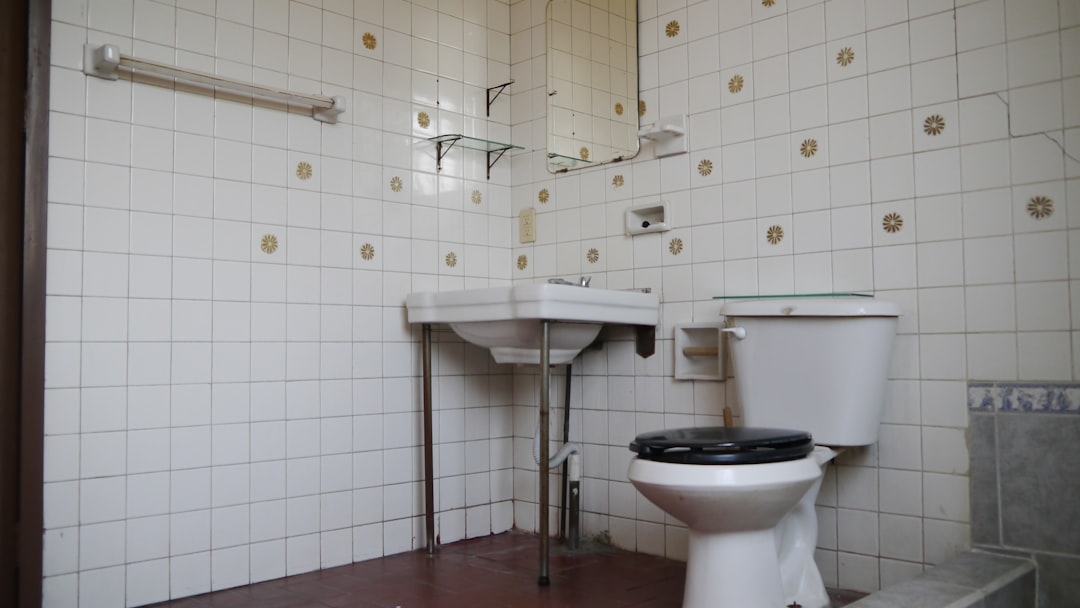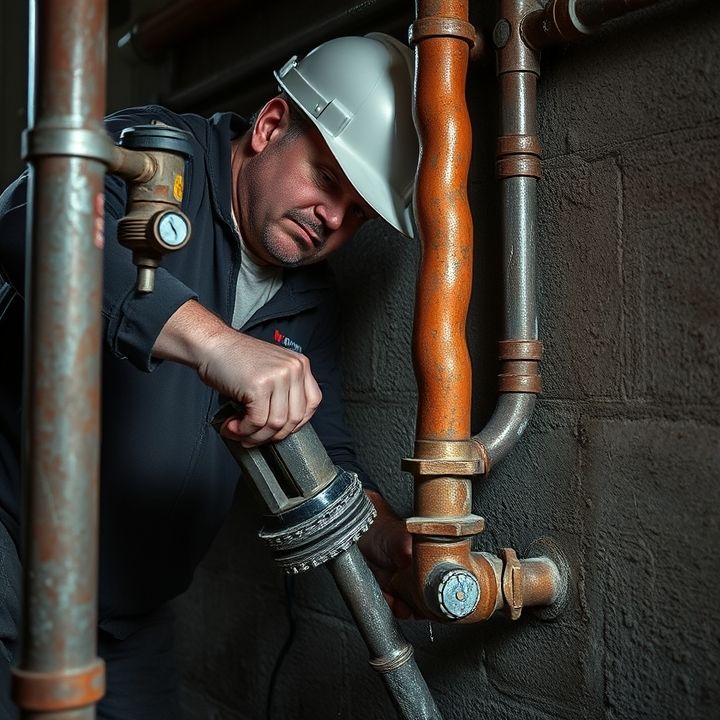Table of Contents
- Introduction
- Smart plumbing systems and IoT integration
- Advancements in leak detection technology
- High-efficiency plumbing fixtures and their benefits
- Innovations in plumbing drain cleaning techniques
- The role of hydro jetting in modern plumbing
- Use of plumbing camera inspections for diagnostics
- Eco-friendly plumbing solutions and sustainable practices
- Trends in plumbing maintenance and repair services
- Conclusion
- Frequently Asked Questions
Introduction
In a world where technology reigns supreme,
the plumbing industry is no exception to the rule.
From smart faucets that conserve water to advanced leak detection systems that safeguard our homes,
innovations in plumbing are reshaping the way we think about water management and sanitation.
Imagine a future where your sink can diagnose its own issues or where AI-powered sensors can predict plumbing failures before they occur.
These aren’t just dreams; they are becoming reality.
Join us as we dive into the latest advancements in plumbing technology,
exploring cutting-edge tools and techniques that aim to improve efficiency, sustainability, and convenience.
Whether you’re a homeowner, contractor, or simply a curious reader,
discover how these innovations are not only enhancing our daily lives but also paving the way for a more sustainable future.
Smart plumbing systems and IoT integration
Smart plumbing systems are revolutionizing the way we approach water management in both residential and commercial properties. These advanced systems utilize Internet of Things (IoT) technology to enable real-time monitoring and control of plumbing infrastructure. By connecting appliances, pipes, and fixtures to the internet, users can gain valuable insights into water usage, detect leaks, and optimize performance.
IoT integration allows for the automation of various plumbing functions. For example, smart water meters can track usage patterns and send alerts to homeowners when unusual consumption is detected, potentially indicating a leak. Additionally, systems can be programmed to shut off water supply automatically in case of emergencies, preventing costly damage.
Another noteworthy advancement is the use of smart sensors in drainage systems, which can monitor blockages and inform maintenance teams proactively. These innovations not only enhance efficiency but also promote sustainable water usage by helping users better understand their consumption habits.
Advancements in leak detection technology
Recent advancements in leak detection technology have revolutionized the plumbing industry, making it more efficient and proactive. Traditional methods often involved guesswork and extensive invasive measures, leading to unnecessary disruptions. However, modern technologies such as acoustic leak detection utilize sound waves to identify leaks in pipes by analyzing the noises produced by escaping water.
Additionally, infrared thermography can detect temperature variations caused by water leaks, providing visual evidence without the need for invasive procedures. Sensor technology has also progressed, with smart sensors now capable of monitoring water pressure and flow rates in real-time. These devices can send alerts to homeowners or plumbers when abnormalities are detected, allowing for immediate action to prevent further damage.
Moreover, advanced software now aids in analyzing data from these various technologies, enabling more accurate detection and quicker resolution of leaks. These innovative solutions not only save time and money but also minimize water wastage, contributing to a more sustainable approach to plumbing.
High-efficiency plumbing fixtures and their benefits
High-efficiency plumbing fixtures are designed to reduce water usage while maintaining performance, which is increasingly important in today’s water-conscious society. These fixtures include toilets, showerheads, faucets, and urinals that utilize advanced technology to maximize water savings. For example, modern low-flow toilets use as little as 1.28 gallons per flush compared to older models that use up to 3.5 gallons.
The benefits of high-efficiency plumbing fixtures extend beyond water conservation. By minimizing water usage, homeowners can also see a significant reduction in their utility bills. Furthermore, these fixtures often require less energy to heat water, contributing to lower energy costs as well.
Another advantage is the positive environmental impact; less water usage leads to reduced strain on local water supplies and wastewater systems. Some fixtures are also designed with durable materials that increase longevity and reduce the need for replacements, leading to less waste.
Overall, investing in high-efficiency plumbing fixtures not only supports sustainability efforts but also promotes economic savings for households.
Innovations in plumbing drain cleaning techniques
Innovations in plumbing drain cleaning techniques have significantly improved the efficiency and effectiveness of clearing blockages. One of the most notable advancements is the use of high-pressure water jetting, which employs a specialized nozzle to blasts water through pipes at high velocities. This method not only removes clogs but also eliminates residue and debris from the interior of pipes, reducing the likelihood of future blockages.
Another advancement is the implementation of robotic drain inspection technology. These small, remotely operated robots navigate through pipes, capturing real-time video and images of the drainage system. This allows plumbers to identify issues without invasive procedures.
Additionally, enzymatic drain cleaners have gained popularity due to their biodegradable nature, breaking down organic materials in a safe manner compared to traditional chemical cleaners. Finally, trenchless technology has revolutionized the way plumbing repairs are conducted, allowing for pipe replacements without the need for extensive excavation. Together, these innovations are transforming the plumbing industry, making drain cleaning more efficient and environmentally friendly.
The role of hydro jetting in modern plumbing
Hydro jetting has emerged as a significant advancement in modern plumbing, providing an effective method for clearing clogs and maintaining pipe integrity. Utilizing high-pressure water jets, this technique is capable of removing stubborn blockages caused by grease, roots, and mineral buildup. Unlike traditional snaking methods that can only create a hole through the obstruction, hydro jetting thoroughly cleans the entire pipe, restoring it to its original diameter and preventing future clogs.
This method is not only efficient but also environmentally friendly, as it employs water as the primary tool, reducing the need for harmful chemicals. Hydro jetting can be used on various pipe materials, including PVC and copper, making it versatile in application. It is particularly useful for commercial plumbing systems that experience heavy usage and complex drainage issues. As plumbing technology continues to advance, hydro jetting remains at the forefront, offering both homeowners and businesses an effective solution for maintaining their plumbing systems.
Use of plumbing camera inspections for diagnostics
The use of plumbing camera inspections has emerged as a significant advancement in the field of plumbing diagnostics. This technology involves the insertion of a small, waterproof camera into plumbing systems to provide a real-time video feed of the interior of pipes. With this method, plumbers can quickly identify blockages, leaks, and other issues without the need for invasive digging or tearing up walls.
This diagnostic approach not only saves time but also reduces costs associated with traditional inspection methods. The high-resolution imagery offered by these cameras allows for precise analysis, enabling plumbers to make informed decisions regarding repairs. Furthermore, plumbing camera inspections can reveal the condition of the pipes, such as corrosion or buildup of materials, which can help in preventive maintenance.
Overall, plumbing camera inspections represent a vital tool in modern plumbing practices, enhancing accuracy and efficiency in diagnosing and resolving plumbing concerns.
Eco-friendly plumbing solutions and sustainable practices
Eco-friendly plumbing solutions and sustainable practices are increasingly becoming essential in modern construction and renovation projects. These solutions focus on minimizing environmental impact while ensuring efficient use of water and energy. One significant advancement is the use of low-flow fixtures, which drastically reduce water consumption without sacrificing performance. Additionally, plumbing systems incorporating greywater recycling systems allow for the reuse of water from sinks, showers, and washing machines for irrigation or toilet flushing.
Another sustainable practice is the installation of tankless water heaters, which provide hot water on demand, thereby conserving energy compared to traditional storage water heaters. Furthermore, many contemporary plumbing materials are being designed with sustainability in mind, such as PEX piping, which is durable and reduces the need for coupling and fittings.
Employing smart technology in plumbing systems also enhances sustainability; for instance, smart faucets and sensors can detect water leaks or monitor usage, helping homeowners and business owners make informed decisions about their water consumption. These innovations reflect a growing commitment to sustainability in the plumbing industry.
Trends in plumbing maintenance and repair services
In recent years, plumbing maintenance and repair services have undergone significant changes, driven by advancements in technology and evolving consumer expectations. One prominent trend is the increasing use of smart plumbing systems, which allow homeowners to monitor water usage and detect leaks in real-time through smartphone applications. This proactive approach not only helps in identifying issues before they become major problems but also promotes water conservation.
Another important trend is the embrace of trenchless technology for pipe repairs and replacements. This method minimizes the disruption to landscapes and infrastructure by allowing plumbers to repair pipes without extensive digging. As a result, it saves both time and costs associated with traditional methods.
Additionally, there has been a growing emphasis on eco-friendly plumbing solutions, such as low-flow fixtures and water-efficient appliances. These innovations not only help reduce water bills but also align with a broader societal push towards sustainability.
Finally, the integration of video inspection technologies is becoming standard practice in diagnosing plumbing issues more accurately, making repairs more efficient and reducing the need for invasive exploratory work.
Conclusion
In conclusion, the plumbing industry is witnessing a remarkable transformation driven by technological innovations that enhance efficiency, sustainability, and convenience. From smart plumbing systems incorporating IoT to eco-friendly fixtures and advanced diagnostic tools like camera inspections, these advancements not only improve the reliability of plumbing services but also promote responsible water usage. As we embrace these cutting-edge solutions, it becomes increasingly important for homeowners and businesses to stay informed and proactive in maintaining their plumbing systems. Whether you are looking to upgrade to high-efficiency fixtures, implement smart technology, or require immediate assistance with plumbing issues, we encourage you to take action. Don’t let plumbing problems disrupt your daily life—call 573-555-2121 today for professional plumbing assistance that you can trust. Your home deserves the best care, and our experts are ready to help you navigate the latest innovations for a more efficient, sustainable plumbing experience.
‘

